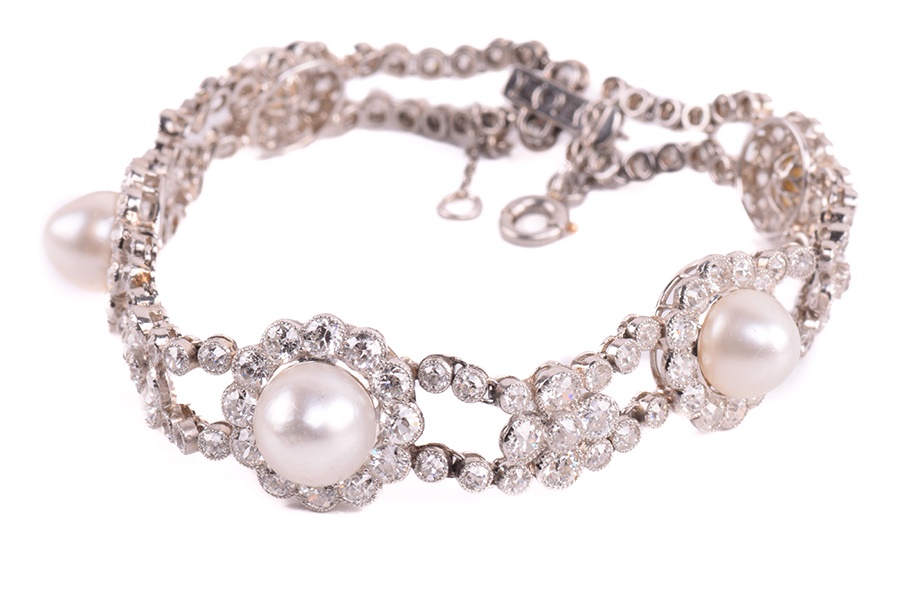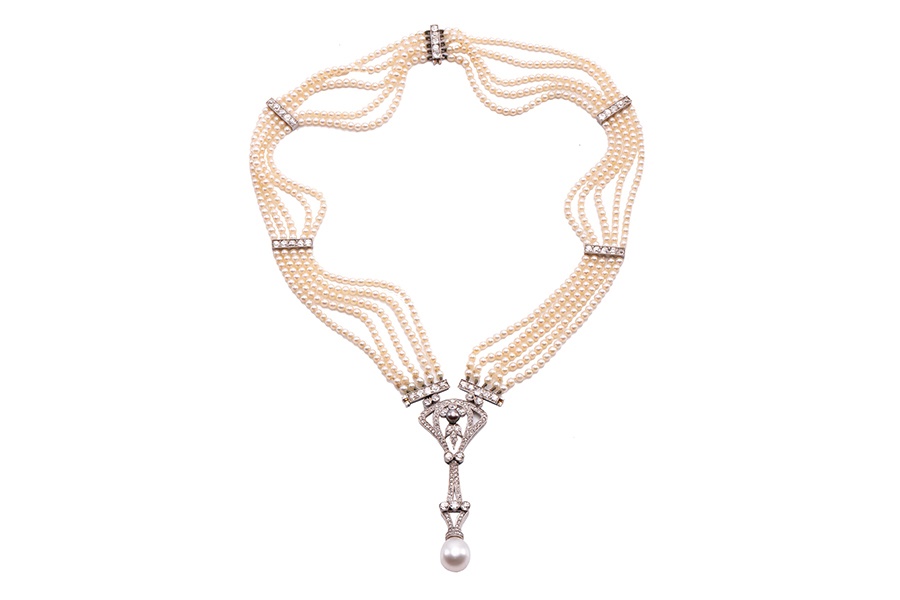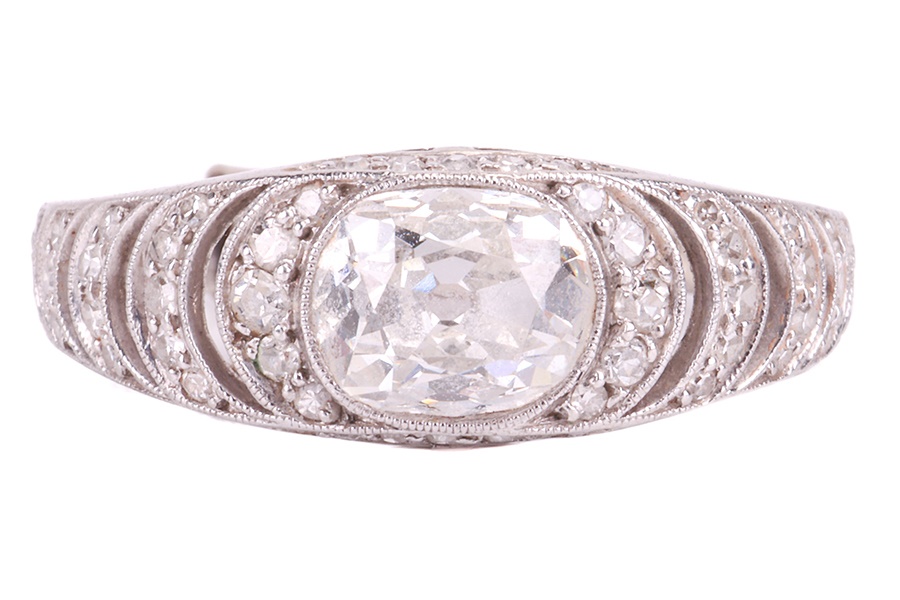Is Belle Epoque jewellery worth anything?
The jewellery of the Belle Epoque tends to be characterised by fluid lines and asymmetrical patterns
24/10/2024
The Belle Epoque (Beautiful Era) was a period of 43 years of peace and prosperity in France between the end of the Franco-Prussian war in 1871 and the outbreak of World War 1 in 1914. Although similar periods in growth could be seen globally, these years were the glory days of late 19th Century France and interestingly, were only actually called The Belle Epoque in retrospect - the phrase was first used in 1940 when Paris was under German occupation and was invented out of nostalgia for happier, magical times.
A Belle Époque pearl and diamond cluster bracelet
The period was marked in France by the great Paris Expositions which showcased the finest in French innovation – the Eiffel Tower was built as a gateway to the 1889 World Fair and the Paris Metro was inaugurated at the 1900 Exposition Universelle. This was a time of optimism, affluence, global influence, and colonial expansion for France. Electricity arrived, cinema was invented, and the epicentre of this optimism, wealth and excitement was in Paris.
Toulouse Lautrec captured the spirit of the times and places such as the Moulin Rouge and the Folies Bergere were the scenes of scandalous nightlife and the notorious Can Can dance!
A Belle Époque cultured pearl necklace
The predominant style was Art Nouveau, which was inspired by nature with its curved lines and structures of plants and flowers. It was reflected in architecture, art, fashion, and, of course, jewellery.
The jewellery of the Belle Epoque tends to be characterised by fluid lines and asymmetrical patterns. Brooches, chokers, festoon (draped) necklaces, pendants, sautoir necklaces, rings and earrings were all popular. Old cut diamonds, pearls, enamelling, gold, and platinum were used to reflect the female form as well as bows, swags, crosses, ribbons, and insects. The shapes were intensely feminine and were, for the time, considered highly avant-garde. Chaumet, Cartier and Van Cleef & Arpels were leading proponents of Art Nouveau jewellery and high society, the wealthy and the famous would have flocked to buy their pieces.
Over a hundred years later, this jewellery remains wearable and is highly collectable. As the Belle Epoque was a relatively short period of time, the jewellery is rare and has an increased value as a result.
A global network of enthusiastic collectors ensures that prices achieved at reputable international auction houses are consistently high. Pieces can command many tens of thousands of pounds, with important pieces such as the splendid Cartier necklace from the Doris Duke Collection of Important Jewellery exceeding $2.3 million at Christies in 2004.
Here at Dawsons, our highly skilled and gemmologically qualified Jewellery Team will accurately assess and authenticate Belle Epoque jewellery through a combination of our in-house expertise and via independent laboratory testing.
read more
How Do I Tell if my Pearls are Real?
How Can You Tell if Jewellery is Fine?
Is Antique Jewelllery Worth Anything?
How Can You Tell if a Necklace is Antique?

Nicky Houston
Our Head of Jewellery, Watches & Silver... Nicky is a highly respected Auctioneer & Valuer, who had dreams of becoming an artist. Whilst she may not have made it as a successful artist herself, Nicky has helped many a customer to successfully sell and buy beautiful pieces of jewellery and works of art over her many years working within the auction industry.
Jewellery Silver & Objects of Virtue Watches
Are you thinking of selling any Belle Epoque jewellery?
With a global audience of over 10 million active bidders, Dawsons can secure the highest prices.
Get in touch with an expert Jewellery Valuer for sales advice, we would be delighted to help you:


